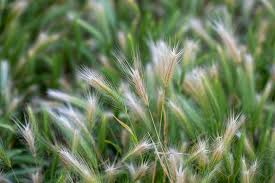Introduction
Foxtail Weed, Foxtail weed, belonging to the genus Setaria, is a common invasive plant that poses challenges to agriculture and landscaping. Known for its distinctive bushy seed heads that resemble a fox’s tail, this weed can quickly spread and dominate areas, making it crucial for homeowners and farmers to understand how to identify and manage it effectively.
Identification of Foxtail Weed
Foxtail weed is easily identifiable by its tufted seed heads, which appear in various colors, ranging from green to golden brown as they mature. The plants typically grow between 1 to 4 feet tall, with elongated, narrow leaves that can reach lengths of up to 12 inches. The stems are erect and may have a slight purple hue. There are several species of foxtail weed, including:
- Giant Foxtail (Setaria faberi): This species can grow up to 6 feet tall and produces larger seed heads.
- Green Foxtail (Setaria viridis): More common in disturbed areas, it is smaller and has a finer texture.
- Yellow Foxtail (Setaria pumila): Recognized by its yellowish seed heads, this species is often found in lawns and fields.
Impact on Agriculture and Landscaping
Foxtail weed can have significant negative effects on both agricultural productivity and landscape aesthetics. In agricultural settings, it competes with crops for nutrients, water, and sunlight, leading to reduced yields. Additionally, foxtail can harbor pests and diseases that may affect surrounding crops. In gardens and lawns, the invasive nature of foxtail weed can diminish the visual appeal and disrupt the growth of desirable plants.
Management Strategies
Effective management of foxtail weed involves a combination of cultural, mechanical, and chemical practices:
- Cultural Control: Maintaining healthy, dense vegetation can help suppress foxtail growth. Regularly mowing grass and promoting competitive plants can prevent foxtail from establishing.
- Mechanical Control: Hand-pulling foxtail weeds before they seed can be effective, especially in small areas. For larger infestations, consider using a hoe or tiller to uproot the plants.
- Chemical Control: Herbicides can be used as a last resort to manage foxtail weed. Selective herbicides targeting grasses can be applied in the early growth stages of the weed. Always follow label instructions and consult with a local extension service for advice tailored to your specific region.
Conclusion
Foxtail weed is a prevalent and resilient invasive plant that can significantly impact agricultural and landscaping efforts. Early identification and proactive management are crucial in preventing its spread. By implementing a combination of cultural, mechanical, and chemical strategies, landowners can effectively combat foxtail weed and maintain healthy landscapes and productive fields.
You Might Also Like These:



